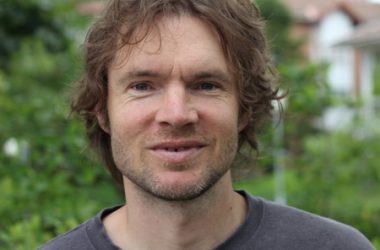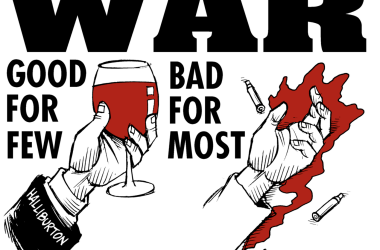Recently, I wrote a review of the first volume of Erich Mühsam’s diaries (1910-1911), published in full length for the first time in 2011 by Berlin’s Verbrecher Verlag.
The history of Mühsam’s diaries is a special one, and it is included in the second appendix to Liberating Society From the State and Other Writings, which addresses the fate of Erich’s wife, Zenzl Mühsam. After Erich’s death at the hand of SS wardens at the Oranienburg Concentration Camp, Zenzl fled to Prague. With the help of the Czech press attaché Camill Hoffmann, Erich’s papers were delivered to her a couple of months later. Eventually, she took them to the Soviet Union, hoping the Soviet authorities would publish and translate them. Instead, the papers got buried in the Maxim Gorky Institute, while Zenzl spent no less than twenty years in prisons and labor camps. Only in 1955, two years after Stalin’s death, was she allowed to leave for East Germany, where she was given an apartment and a pension under the promise that she would never publicly talk about her experiences in the Soviet Union. Soon thereafter, microfilm copies of Erich’s papers were sent to the Akademie der Künste in East Berlin. Thirty-five out of the forty-two notebooks containing Erich’s diaries were among them. The notebooks 2-4 and 18-21 remain missing to this day.
In 1994, a one-volume selection of diary entries was published by the renowned Deutscher Taschenbuch Verlag (dtv). The selection was edited by the longtime Mühsam scholar Chris Hirte. For about twenty years, Hirte’s attempt to find a publisher willing to release a complete edition was in vain. Eventually, he came to an agreement with a small independent publishing house in Berlin, Verbrecher Verlag, most renowned for innovative fiction with a leftist touch. He also found a co-editor in the computer scientist Conrad Piens. Together, they developed a publishing concept that brings together print and online publishing in a truly revolutionary manner.
All of Mühsam’s diaries will appear in print; to be exact, in fifteen volumes published in half-year intervals. The last volume is scheduled to come out in the fall of 2018. The hardcover books, impressing with a classic design and elegant ribbon, allow for an unadulterated reading experience with no interruptions by brackets, notes, ellipses, and so forth. However, there is no lack of background information! To the contrary, on the website www.muehsam-tagebuch.de readers are provided with more background information than any book could ever provide. They find the entire text digitalized and equipped with numerous links to web pages providing extensive information on people, places, events, etc. There is also an online index with hundreds of entries and a search option. Particularly impressive are the scans of all the original pages, allowing you to double-check the transcriptions or to simply marvel at Mühsam’s surprisingly handsome handwriting. The site and all of its features are accessible for free!
Inspired by so much ingeniousness and apparent generosity, I once again wondered about the future relationship between print and online publishing. Reaching out to people involved in novel publishing projects, I talked to Jonny Gordon-Farleigh, editor of the exciting “community-building online magazine” Stir. The entire conversation got published on the Alpine Anarchist website, but I want to share some of Jonny’s thoughts here, since they touch on crucial questions regarding what he calls “a return to the D.I.Y. ethic that meant that we could publish before we received lots of ‘yes’s’ from funders and directors”.
About the apparent contradiction between publishing texts online for free and trying to maintain a space for print publishing, Jonny relates the following story:
“One member of the Wu Ming Foundation, long-time advocates of Copyleft and Creative Common licenses, gives an illuminating example of this in the case of the revolutionary project initiated by sci-fi writer Eric Flint: ‘He (Eric) persuaded his publisher, Baen Books, to build a free-of-charge virtual library containing many novels from Baen’s catalogue, all of them still on the market. People could log on www.baen.com and download dozens of novels in electronic form, each of them available in five formats. One might think it was going to be a suicide, for each downloaded text would correspond to one unsold copy of the book. That’s what market analysts on the payroll of corporate record labels keep telling us every day. Well, any ‘ideological’ prejudice was swept away by an inconfutable proof: from the moment their books appeared on the shelves of Eric Flint’s virtual library, most authors have witnessed an increase in sales. One example above all: Mother of Demons, by Eric Flint himself, sold 9,694 copies from September 1997 to the end of 2000. In the following eighteen months, while the text was freely downloadable from the website, the book doubled its sales: 18,500 copies.’”
On the apparent contradiction of running a “community-building” online magazine, he says:
“…we want Stir to become a living archive of practical ideas for those who want to form community trusts for their football teams, take cooperative ownership of their local pub, establish self-directed educational centres, initiate community-supported agriculture, and all the other aspects which are essential to our lives . . . Ultimately, we want to organise training sessions and workshops where people can learn practical skills such as designing successful outreach campaigns, community building, cooperative financing strategies, and other relevant skills which they can take back to the places they live and start their own initiatives. So what is implied by the articles can be applied in the world!”
Once again, I encourage people to read the entire interview, as it provides much food for thought about the future of radical publishing—a future that is not only important for the folks at Verbrecher Verlag, PM Press, or Stir, but for all of us trying to build a better world.
Gabriel Kuhn
(April 2012)
More blogs from Gabriel | Back to Gabriel Kuhn’s Author Page






